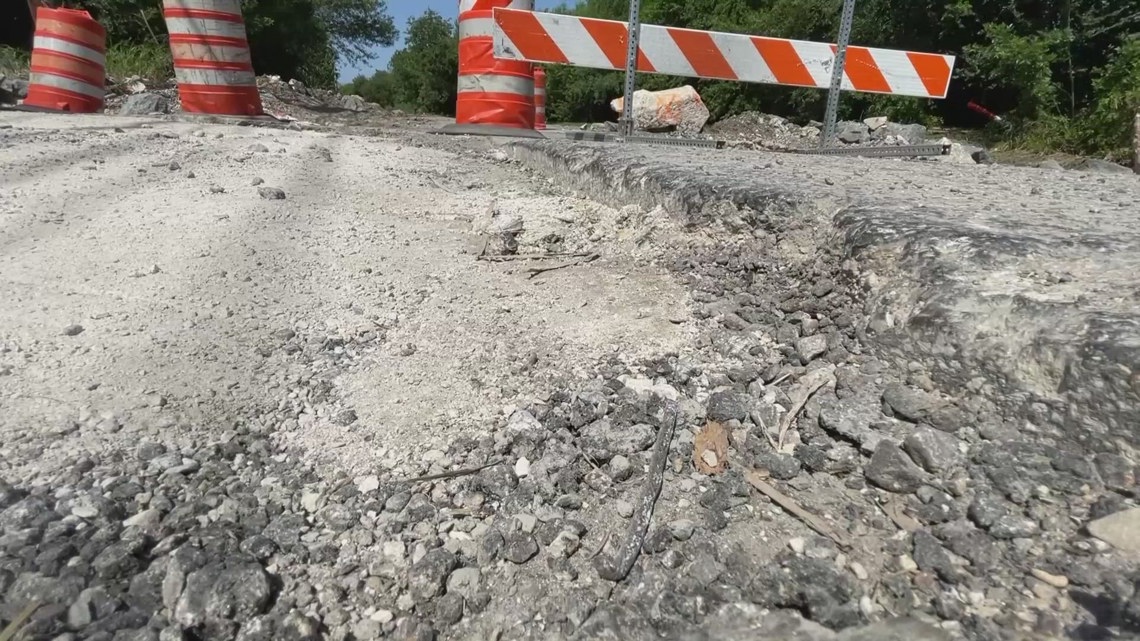
Mayor Gina Jones announces an independent review of the recent flood, promising transparency and action.
SAN ANTONIO — When Mayor Gina Jones stepped into office Wednesday, the first topic she addressed at a briefing for the media was the impact of the devastating flood last Thursday.
After extending condolences to families suffering from loss and thanking first responders for their life-saving efforts, Jones said an independent review of the event is already underway and she promised transparency and action.
“As many of you know that will be a public report as the public certainly deserves to understand what happened and how we’re going to mitigate those risks moving forward,” Jones said, adding “We are making sure it is appropriate in scope, not only for the engineering and infrastructure related items as a result of that but also to make sure our processes and policies, as it relates to events of extreme weather are sufficient.”
One of the first sites identified as needing significant storm repair work is about three miles upstream from the site where vehicles were swept away and most of the storm deaths happened.
Old O’Connor Road is well north of the deadliest zone, but a news release by the city identified the area as one that may be closed for an extended time because of damage.
The heavily traveled corridor, which intersects the spot where Weidner Road becomes Lookout Road, remains closed to traffic as engineers evaluate what repairs need to be made after witnesses reported a wall of water in the area during last Thursday’s drenching flood.
The area features a railroad line and a trestle that crosses over Old O’Connor that is traditionally blocked to vehicle traffic. The area is owned and controlled by Union Pacific as a right of way. Neighbors said the roadway has been closed for several years after the railroad completed a project to upgrade the bridge.
Large concrete blocks and panels that used to be anchored to the pavement by chains and metal stakes were carried several yards downstream.
Under the trestle, large stones that protected the underside of the bridge were also tossed about, and relocated downstream.
Witness marks in the trees in the area show debris trapped about six feet above ground, indicating the entire area was inundated during the storm.
The shoulder of the road is eaten away in places and the force of fast moving water removed asphalt on its way downstream.
The flashing beacon in the area designed to warn drivers of danger was ripped from its mooring and had to be replaced.
A stop sign at the intersection ended up trapped in vegetation across the road from where it was ripped from the ground.
Public Works crews have returned to the area numerous times to shore up barriers designed to keep drivers out of the damaged area, but so far, impatient drivers have been seen moving the barricades out of the way so that traffic may continue to pass.
For a short time Monday, a San Antonio police officer waved drivers away, explaining that even where there is no water on the road, it’s still a violation to remove or ignore a barrier related to what could be dangerous flooding conditions
The Texas Transportation Code specifies anyone who removes a barricade over water can face a Class B Misdemeanor with a fine up to $2,000.
A spokesman for the city’s Public Works Department provided a statement, writing “The barriers are being repeatedly moved by drivers. Staff has put them back multiple times,” adding “New, more heavy-duty barricades will be placed at the site today.”
The city is currently taking public input on the next municipal budget and they are urging everyone who knows of areas that need to be addressed to speak up during the process.
They are taking input online at the SA SPEAK UP site.
